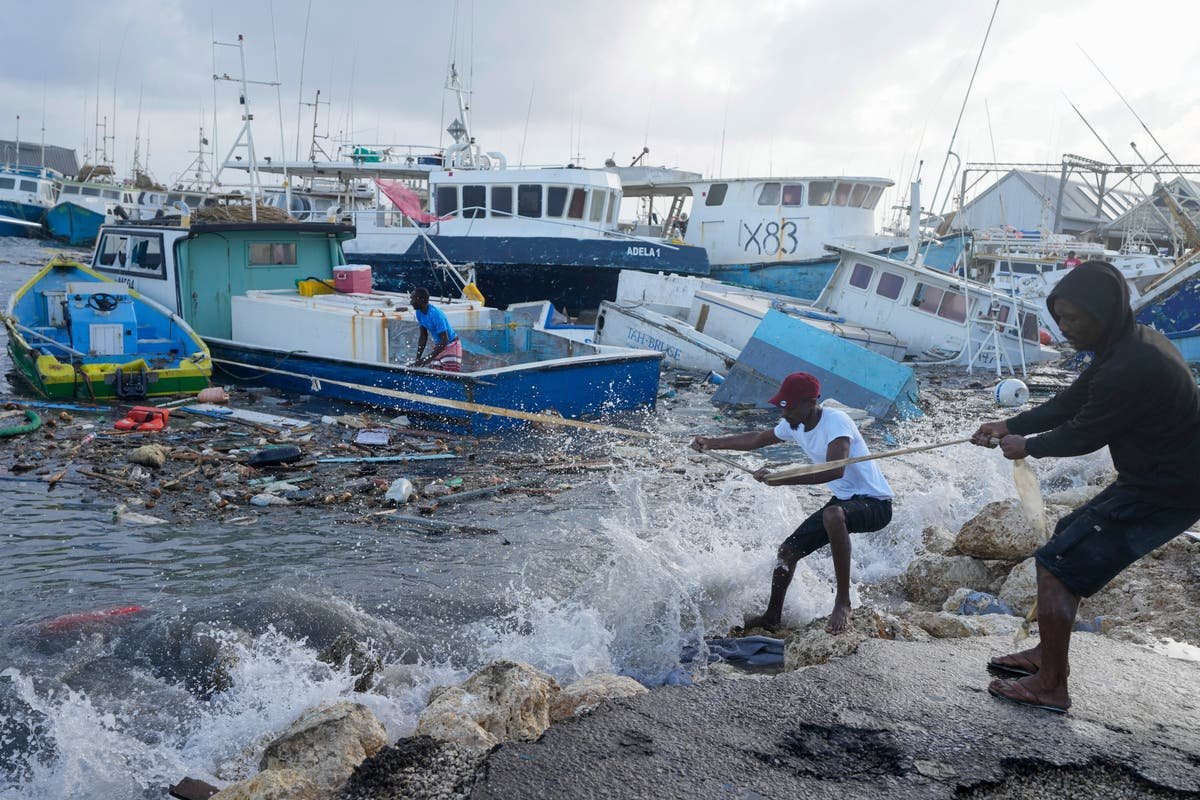Hurricane Beryl’s Impact on Grenada

Grenada hurricane beryl – Hurricane Beryl made landfall in Grenada as a Category 3 hurricane, bringing with it destructive winds and heavy rainfall. The hurricane caused widespread damage across the island, affecting both infrastructure and homes.
Affected Areas
The areas most severely affected by Hurricane Beryl include the parishes of St. George, St. John, and St. Mark. In these areas, winds reached speeds of up to 125 mph, causing significant damage to buildings, power lines, and roads.
Infrastructure Damage
Hurricane Beryl caused extensive damage to Grenada’s infrastructure. The hurricane destroyed bridges, roads, and power lines, leaving many communities without access to essential services. The damage to infrastructure is expected to take months to repair.
The recent devastation caused by Hurricane Beryl in Grenada has left many in dire need of assistance. Individuals receiving Supplemental Security Income (SSI), Social Security Disability Insurance (SSDI), or Veterans Affairs (VA) benefits may be eligible for a stimulus check to help offset the economic impact of the storm.
More information about these checks can be found at ssi ssdi va stimulus check. As recovery efforts continue in Grenada, it is crucial that those affected by the hurricane receive the support they need to rebuild their lives.
Home and Business Damage
In addition to infrastructure damage, Hurricane Beryl also caused significant damage to homes and businesses. Many homes were destroyed or damaged beyond repair, leaving thousands of people homeless. Businesses were also affected, with many suffering damage to their buildings and inventory.
Amidst the devastation left by Hurricane Beryl in Grenada, the resilience of the human spirit shone through. Like the sepia-toned memories of a bygone era, sepia bride photographers captured the raw emotions and indomitable spirit of the people as they rebuilt their lives, one precious moment at a time.
The photographs served as a poignant reminder of the transformative power of hope and the unyielding spirit that emerged from the wreckage of the storm.
Recovery Efforts in Grenada

In the aftermath of Hurricane Beryl, Grenada has embarked on a comprehensive recovery process to restore infrastructure, provide aid to affected communities, and rebuild the island’s economy. The recovery efforts involve a concerted effort from various organizations and agencies.
Government Initiatives
- The Government of Grenada has established a National Disaster Relief Fund to provide financial assistance to affected individuals and businesses.
- The Ministry of Infrastructure has launched a program to repair and rebuild damaged roads, bridges, and other infrastructure.
- The Ministry of Education is working to restore schools and provide educational support to students.
International Aid
Several international organizations have provided aid to Grenada, including:
- The United Nations has deployed a team of experts to assess the damage and coordinate relief efforts.
- The World Bank has approved a loan to support the government’s recovery plan.
- The Caribbean Development Bank has provided funding for infrastructure repairs and economic recovery.
Challenges and Successes
The recovery process has faced challenges, including:
- Limited resources and infrastructure
- Displacement of residents
- Disruption of economic activities
Despite these challenges, there have been successes in the recovery efforts:
- Temporary shelters have been established for displaced residents.
- Essential services, such as electricity and water, have been restored to most areas.
- Businesses are gradually reopening and the economy is showing signs of recovery.
Long-Term Implications of Hurricane Beryl: Grenada Hurricane Beryl
Hurricane Beryl has left a lasting impact on Grenada, not only in terms of immediate damage but also in terms of long-term implications for the country’s economy and environment. The hurricane has caused significant damage to infrastructure, agriculture, and tourism, which are key sectors of the Grenadian economy. The loss of homes and livelihoods has also had a devastating impact on the lives of many Grenadians.
Economic Recovery, Grenada hurricane beryl
The economic recovery from Hurricane Beryl will be a long and challenging process. The government of Grenada has estimated that the cost of rebuilding the country will be in the hundreds of millions of dollars. The tourism sector, which is a major source of revenue for Grenada, has been particularly hard hit by the hurricane. Many hotels and resorts have been damaged or destroyed, and it will take time for them to be rebuilt. The agricultural sector has also been severely affected, with crops and livestock being destroyed. The government is working to provide assistance to farmers and businesses, but the full extent of the economic damage is still being assessed.
Sustainable Development
The long-term implications of Hurricane Beryl also extend to the environment. The hurricane has caused significant damage to the country’s forests, watersheds, and coastal ecosystems. The loss of trees and vegetation has increased the risk of erosion and landslides, and the damage to coral reefs has had a negative impact on marine life. The government of Grenada is working to develop a sustainable development plan that will help to mitigate the risks of future natural disasters. This plan includes measures to protect forests, watersheds, and coastal ecosystems, as well as to promote sustainable agriculture and tourism.
Mitigation of Future Risks
The government of Grenada is also working to implement measures to mitigate the risks of future natural disasters. These measures include building seawalls and other coastal defenses, improving early warning systems, and educating the public about disaster preparedness. The government is also working with international partners to develop a regional disaster management plan.